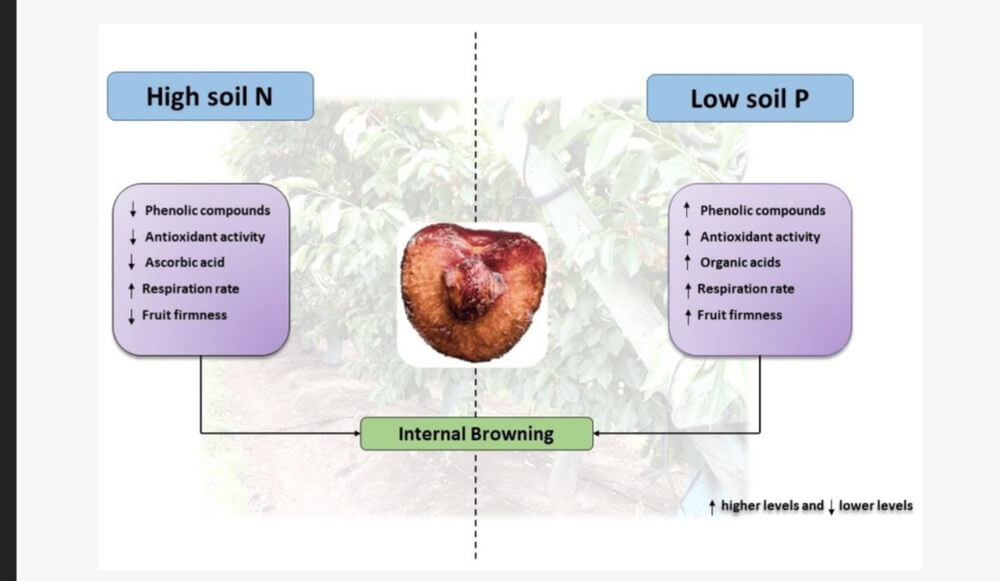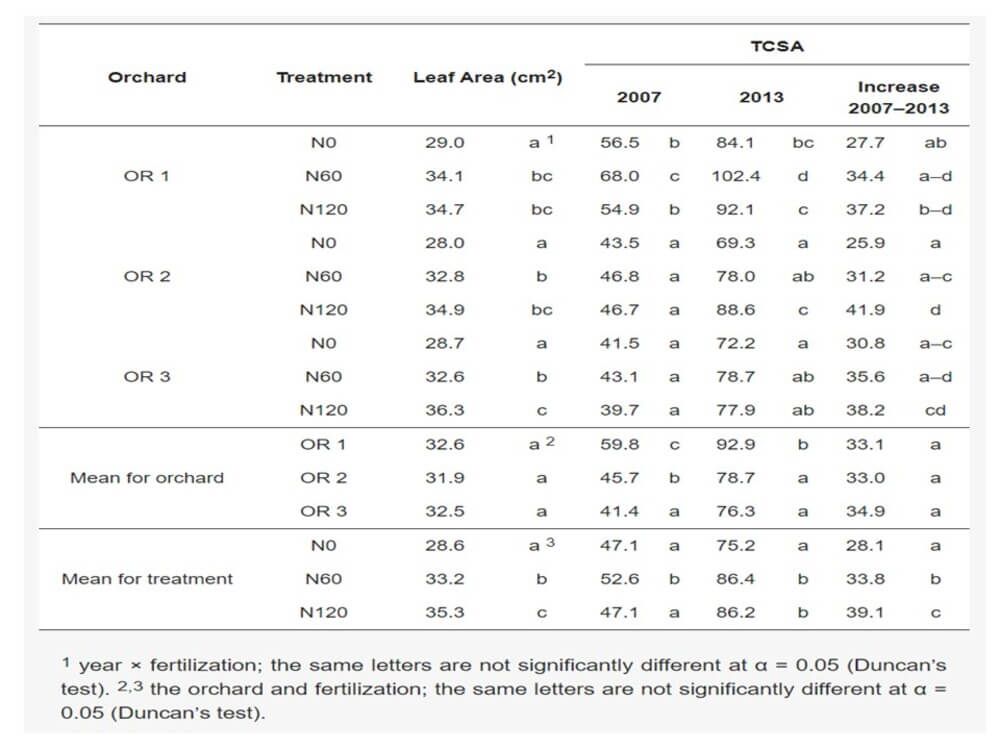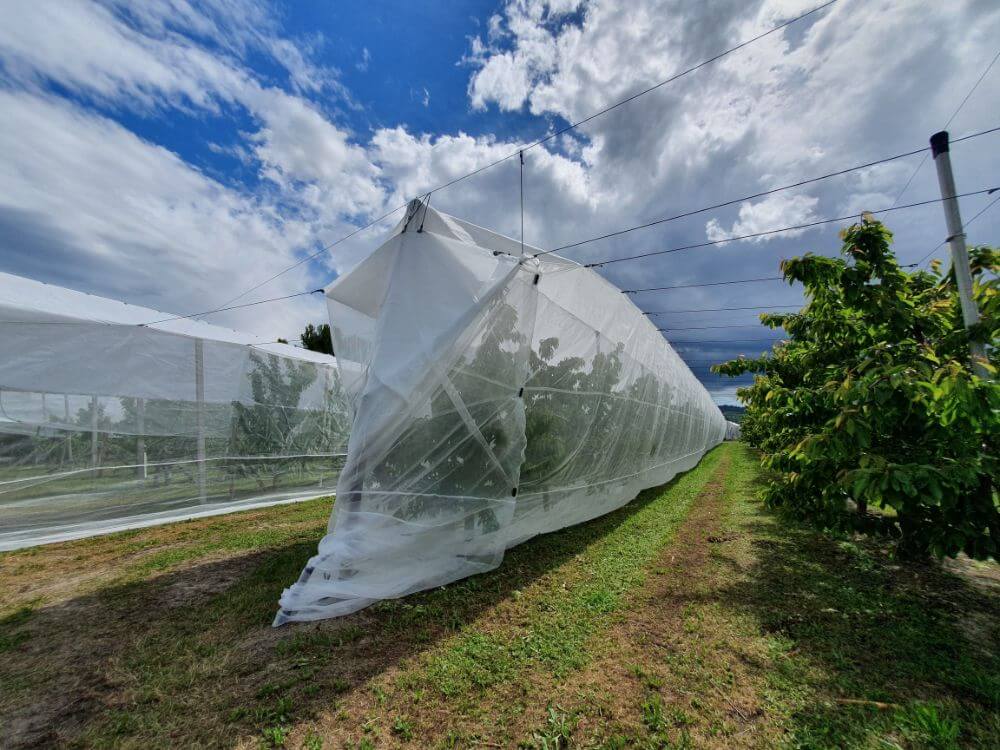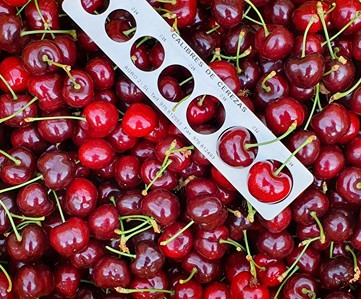In recent years, there has been a significant surge in sweet cherry production in the southern region of Chile. Nevertheless, certain climatic disparities have a detrimental impact on the quality and productivity of exportable fruit. This includes the adverse effects of excessive rainfall occurring during the flowering and pre-harvest stages
The implementation of covers has emerged as an agronomic strategy that provides a safeguard against adverse weather conditions, particularly rainfall, hence resulting in a substantial augmentation of fruit yield available for exportation. Nevertheless, the utilisation of plastic covers might result in detrimental effects on the fruit, including a decrease in firmness and acidity levels.
At now, the quality of cherries produced in Southern Chile is compromised by a decrease in the occurrence of internal pulp browning. However, there is a significant lack of study conducted on this topic. Several research have indicated that fruits with a high concentration of antioxidants, including both phenolic and non-phenolic compounds such as ascorbic acid, have the potential to decrease the occurrence of the physiological condition known as browning.
The soils found in Southern Chile have a notable abundance of organic matter, resulting in elevated levels of accessible nitrogen (N) and a substantial phosphorus (P) concentration. Several studies have demonstrated that the use of nitrogen (N) and phosphorus (P) fertilisers can have a substantial positive impact on the postharvest quality, shelf life, and accumulation of antioxidant chemicals in fruits.
In fact, these effects appear to be more pronounced compared to alternative techniques such as selenium and chitosan treatments. Nevertheless, it is important to provide a more comprehensive analysis about this facet of sweet cherry fruit cultivation. The antioxidant levels of cherries are significantly linked to the quality features and postharvest lifespan of the fruits.
This association may be influenced by the soil acidity levels of the Chilean andisols, as well as the amounts of phosphorus (P) and nitrogen (N) present in both the soil and plant tissues. Hence, the primary aim of this review was to examine the influence of nitrogen (N) and phosphorus (P) availability on the occurrence of internal browning in sweet cherry and establish connections with existing knowledge in other fruit species.
 Immagine 1: Influenza della concimazione con azoto (N) e fosforo (P) sull'imbrunimento interno del ciliegio dolce.
Immagine 1: Influenza della concimazione con azoto (N) e fosforo (P) sull'imbrunimento interno del ciliegio dolce.
Considering that chilean production is expected to continue growing in the coming years, it is imperative to comprehensively understand all relevant factors in order to achieve sustainable production, enhance fruit quality, and maximise profitability. Internal browning is a significant quality parameter that is observed with greater frequency when the duration of cold storage surpasses 45 days.
Similarly, numerous studies have presented empirical support for the adverse impact of excessive nitrogen fertilisation on the quality metrics of fruits, as well as its role in promoting oxidative processes and increasing the fruit's respiration rate. These effects ultimately lead to a reduction in the post-harvest potential of the fruit.
 Immagine 2: Studi sull'impatto della concimazione azotata (sopra) e fosforica (sotto) sugli antiossidanti e sulla qualità dei frutti in diverse specie vegetali.
Immagine 2: Studi sull'impatto della concimazione azotata (sopra) e fosforica (sotto) sugli antiossidanti e sulla qualità dei frutti in diverse specie vegetali.
Similarly, a shortage in phosphorus (P) has been found to have a beneficial impact on antioxidant activity and the composition of phenols. However, it leads to an increase in the activity of polyphenol oxidase and respiration rates, resulting in a decrease in the storage potential. Hence, this study highlights the empirical support for the efficacy of an accurate and well-rounded fertilisation fertilization regimen in obtaining antioxidant-rich fruits with longer shelf life.
Source: Palacios-Peralta, C.; Reyes-Díaz, M.; González-Villagra, J.; Ribera-Fonseca, A. The Potential Roles of the N and P Supplies on the Internal Browning Incidence in Sweet Cherries in the Southern Chile. Horticulturae 2022, 8, 1209. https://doi.org/10.3390/horticulturae8121209.
Melissa Venturi
University of Bologna (IT)
Cherry Times - All rights reserved












